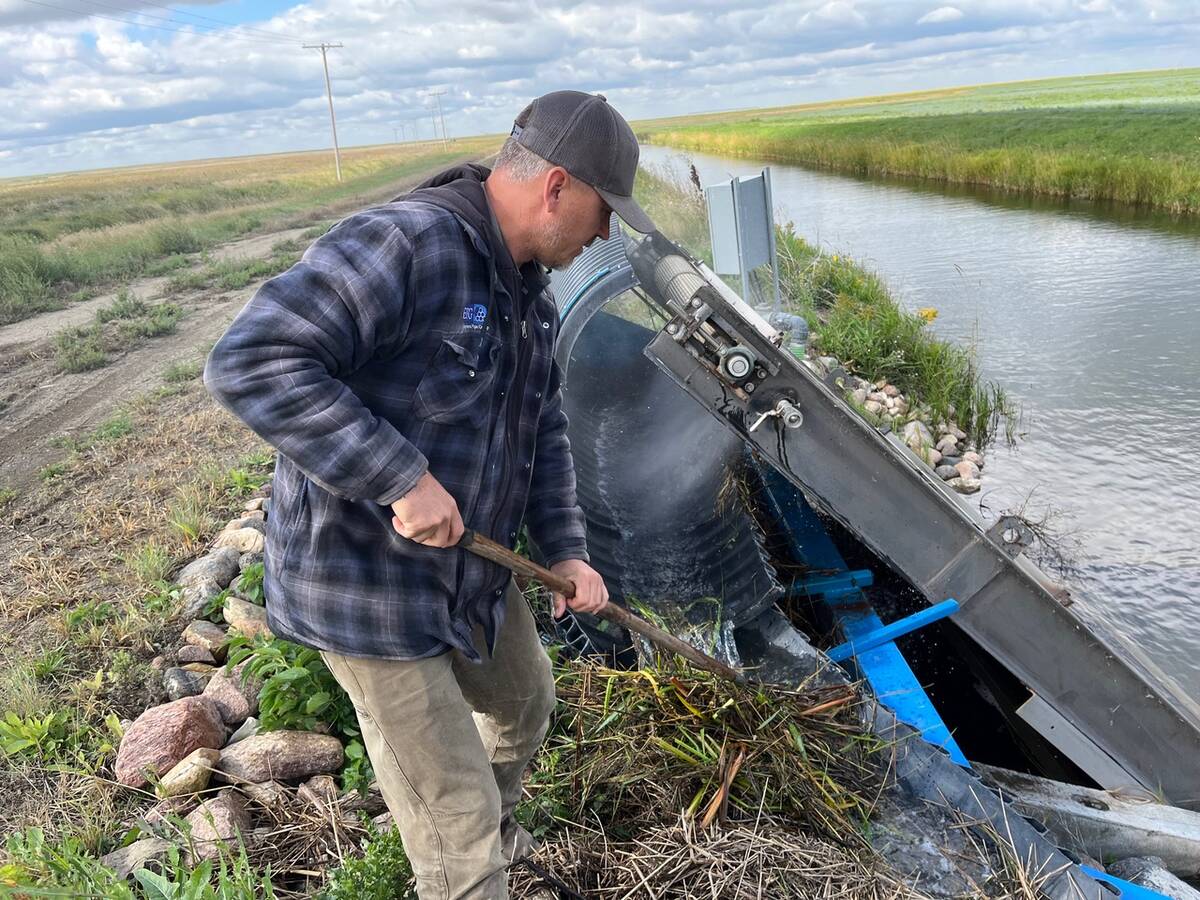Three train cars of food from the national food bank sharing program in
Toronto are being shipped west to aid prairie food banks hard hit by
drought.
“The food is being directed at rural food banks,” said Charles Siedon,
executive director of the Canadian Association of Food Banks in Toronto.
As part of the sharing program, food is regularly distributed from the
head office in Toronto across Canada, based on need and population, but
these carloads are a special shipment to the three prairie provinces
Read Also

Saskatchewan farmer uses tile drainage to manage water
The integration of both irrigation and tile drainage results in higher yields, water efficiency, improved soils and less nutrient runoff, says one producer.
because of the drought, said Siedon.
“There are several donors who have expressed an interest that the food
goes to the people who need it,” said Siedon. He expects the food to
leave Toronto for Winnipeg, Regina and Edmonton within two weeks,
whenever Canadian Pacific Railway, which transports the cars free, can
take the shipment. The food will be distributed from the three centres
to the food banks with the most need.
It’s not the first time a special food bank shipment has been sent
west. During the 1997 Manitoba flood, car loads of food were shipped
from the national food bank to deal with the crisis.
The Canadian Association of Food Banks will conduct a survey at rural
food banks to get a clear picture of the need.
“We just don’t want to overreact. We want to see if there’s a growing
demand, especially in rural food banks.”
David Northcott, executive co-ordinator of Winnipeg Harvest, the food
bank that will be co-ordinating the distribution of the Manitoba food,
said while the staff hasn’t seen an increase in food bank use yet, they
expect to see a dramatic rise in about four to six months when money in
rural areas gets tight.
“We can see this wall coming,” said Northcott, who expects the drop in
agricultural income will hit after harvest.
In Manitoba, 70 percent of the population lives in Winnipeg, where
35,000 clients use the Winnipeg Harvest food bank annually. In the
rural areas 3,500 clients use the more than 30 rural food banks.
Kathy Willis, executive director of the Stettler, Alta., and District
Food Bank, said she worries how the poor crops will affect its annual
fall food drive.
Normally a single fall food drive raises enough money and food to last
throughout the year in the prosperous central Alberta community.
“I suspect our food donations may not be maintained because people will
keep the food themselves. That’s a worry of mine,” said Willis.
While farmers don’t tend to use the food banks, they are major
supporters of it, she said.
Glenda Thomas, in charge of the Barrhead, Alta., food bank, said she
worries people on the fringes of agriculture will be forced to come to
the food bank, and people who have normally supported it won’t have
extra to give away.
“We’re dreading the fall. People don’t have food for their cattle. I
don’t think they’ll have disposable income for the food banks.”
Gordon Barnes, assistant manager with the Regina and District Food
Bank, said they’ve seen a sharp increase from people in rural areas
around Regina using the food bank.
“We’ve had a substantial number of users from outside the city. They’re
not farmers, but they’re dependent on the farm economy,” said Barnes.
“I’m anticipating that could get even worse.”
Marjorie Bencz, executive director of the Edmonton Food Bank and chair
of the Canadian Association of Food Banks, said several rural food
banks have seen an increase in demand. However, she doesn’t know if it
is linked to the drought or a result of the high cost of living and low
wages.
“I don’t think the drought is the whole picture.”
Pat Hagen of Camrose, Alta., said there has been an increase in rural
food bank use, but not from the agriculture community. The demand for
the food bank is from people working in the service sector, not farmers.
“Our big problem here is low wages, not the drought,” said Hagen.
















